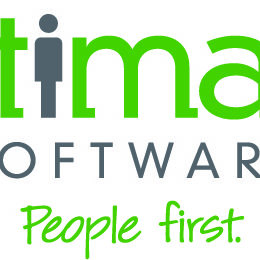
Disclosure: This post is sponsored by Ultimate Software, but all thoughts and opinions are my own.
I finished a book called “The Coaching Habit: Say Less, Ask More, and Change the Way You Lead Forever” by Michael Bungay Stanier. The book teaches you how to form a habit, so you can adopt a coaching mindset, and then offers seven types of questions to have richer and more fulfilling discussions with your team:
-
- The Kickstart Question
- The Awe Question
- The Focus Question
- The Foundation Question
- The Lazy Question
- The Strategic Question
- The Learning Question
Most of this is self-explanatory. In a world of continuous feedback and ongoing coaching, the kickstart question gets you involved in a conversation with your direct report or mentee right away so you talk about what matters most.
The awe question encourages you to dig a little deeper and try to help someone get to the heart of what’s going on mentally or emotionally at work. The focus question asks an individual to figure what’s happening, and the foundation question gets to the heart of what the person wants at work, in relationships, and from you.
I’m lazy, so I loved that there’s a lazy question. The author invites you to ask ‘how can I help?’ without being the first responder in someone else’s life. The strategic question is all about looking at the bigger picture and weighing what matters. Finally, the learning question is all about insight and what we’ve learned, and what we’ll take away, from our experiences.
It’s a good book for your organization to dig deeper and have better conversations with one another.
CONVERSATIONS ENHANCED BY DATA
Those seven questions are helpful, but it’s not like you have hours in your day to sit around and ask all seven questions to every employee in your department. Also, not every employee needs you to ask each question. Some people are in the early stages of their journey while others are further ahead.
Human resources leaders are often scared of people data and believe analytics dashboards are for data scientists; however, people data and analytics can help you have the right coaching conversations with the correct people while understanding core needs and without making assumptions.
Think about it. If we use the framework of those seven questions and map it to the performance management process, some employees may go years without understanding the real challenges in their jobs while others are struggling with their time, attention and focus.
People data and analytics help our leaders have personalized discussions with employees by understanding behavior and trends to create more meaningful experiences. Technology like UltiPro’s Workforce Intelligence tool isn’t just a platform that collects data in a vacuum. The analytics and reporting functionality — combined with predictive, prescriptive, and sentiment analysis — helps leaders understand an employee’s story and have personalized solutions to meet whatever challenges a worker might face.
CREATE AN ENVIRONMENT OF COACHING
Create a coaching culture by marrying people data and analytics with a coaching framework of your choice. I enjoyed reading “The Coaching Habit” and think it offers a simple and effective way to craft a working relationship between leaders and employees in seven easy steps.
Whatever you choose, remember that data can enhance relationships by helping HR professionals and leaders get to the heart of an employee’s story and experience faster.